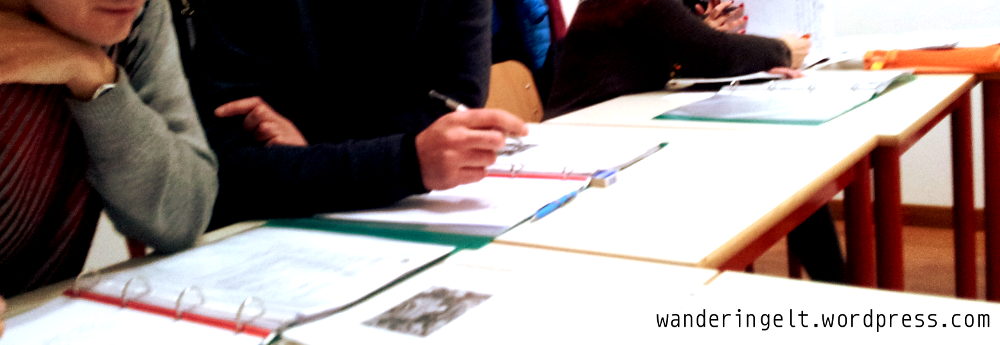I briefly mentioned on this post how I love activities which are materials-light and conversation-driven. I might not have acknowledged it fully, but I’m starting to suspect Dogme has seriously influenced my teaching ????. Anyway, last Sunday I tried to follow #AusELT chat on teaching materials-light, and even though I missed the time and couldn’t join the conversation, it still made me want to write about it.
I don’t know why, but ever since I teach, I have always dreaded the task of preparing teaching materials. I don’t mean handouts or worksheets, which I actually enjoy creating and adapting to my classes when I have the time to do it. I mean “extra” materials such as laminated cards, games, posters and the like.
I have plenty of colleagues who are very good at this, who for almost every lesson come up with some colourful, eye-catching idea to practise vocabulary, revise a grammar point or stimulate conversation. I always look at those materials in amazement, as I rarely have the spirit – or the time – to create such nice-looking props for my lessons. But why is that?
Mainly it’s because I find it not worth my while. I may have to spend 20-30 precious minutes to prepare some nice-looking memory cards, print them and laminate them for an activity that will only last 5-10 minutes in class. Now, this is OK if you can later re-use these cards for other lessons or other groups (as we did in our school with some laminated fake money and credit cards). But this is not always the case, as most of the activities are level- or even group-specific.
Secondly, I might get really disappointed if I spent so much time preparing the cards, and then I had to ditch the activity from my lesson plan for some reason (lack of time, the lesson is going somewhere else, I realise the students don’t need to revise this specific point… The reasons to steer from you lesson plan can be endless, right?).
As I said before, there might be some cases where having some interesting extra materials is really nice and motivating for the students (especially with young learners). For example, if learners are practising functional language on the phone, and they can use a real phone to interact, it can make the activity more interesting, more memorable and even more meaningful. On the other hand, learners might end up just remembering the object or how fun it was to pretend to call each other, and not actually retain much of the language.
In my experience a well planned, materials-light activity can have a much greater impact. Materials-light means that most of the content must come from the learners, and is thus relevant to their experience. It also means that there are less distractions that could divert the students’ attention from the actual task.
I know, this might just be a way to justify my laziness, after all I do think I sometimes could use a bit more creativity when preparing my lessons. But I also think materials-light does not necessarily mean less creativity, as Hana Tichá clearly demonstrates on this lesson.
a blog about things
